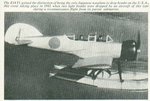elmilitaro
Senior Airman
OK, it really wasn't a bombing raid as I try to make it sound
But can somebody give me more information about the bomb-ladened balloons the japanese released over America.
Thank you.
But can somebody give me more information about the bomb-ladened balloons the japanese released over America.
Thank you.


